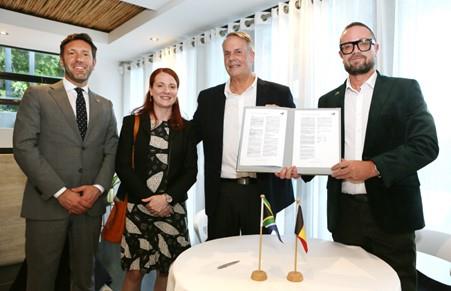09 December 2025

Rwanda has officially unveiled its National Digital Payment System, eKash, marking a significant milestone in the country’s journey toward establishing a fully interoperable financial ecosystem.
This launch represents years of effort to transition from a fragmented payments landscape to a unified platform capable of supporting a cashless economy.
Find out more13 November 2025

ATOMNIA has announced a strengthened partnership with the Wallonia Export & Investment Agency (AWEX) and Belgian technology incubator IGNITY to accelerate the deployment of secure digital connectivity solutions across Africa.
This collaboration will support ATOMNIA’s rapid expansion of its pay-as-you-go OMNIA offering through its distribution partner, Smart Hands Africa, targeting small and medium-sized enterprises (SMEs) in remote and underserved regions.
Find out more
07 November 2025
ST Engineering iDirect brings proven hybrid network solutions to Booth C63.
After demonstrating successful DVB-NIP implementations at IBC 2025, ST Engineering iDirect is bringing the technology revolution to Africa. Visit Booth C63 at AfricaCom 2025 to experience firsthand how hybrid satellite-IP networks are solving Africa's unique connectivity and content delivery challenges.
Find out more06 November 2025
Future technology is rapidly evolving, with ambitious plans to revolutionise data storage and processing beyond Earth’s atmosphere.
One company leading the charge is Lonestar Data Holdings, which envisions establishing a data centre on the Moon. President Stephen Eisele asserts that placing data centres in space offers unmatched security, shielding data from terrestrial threats and hacking attempts. Recently, Lonestar successfully tested a tiny, hardback-sized data centre that travelled to the Moon aboard the Athena Lunar Lander, launched by SpaceX.
Find out more






